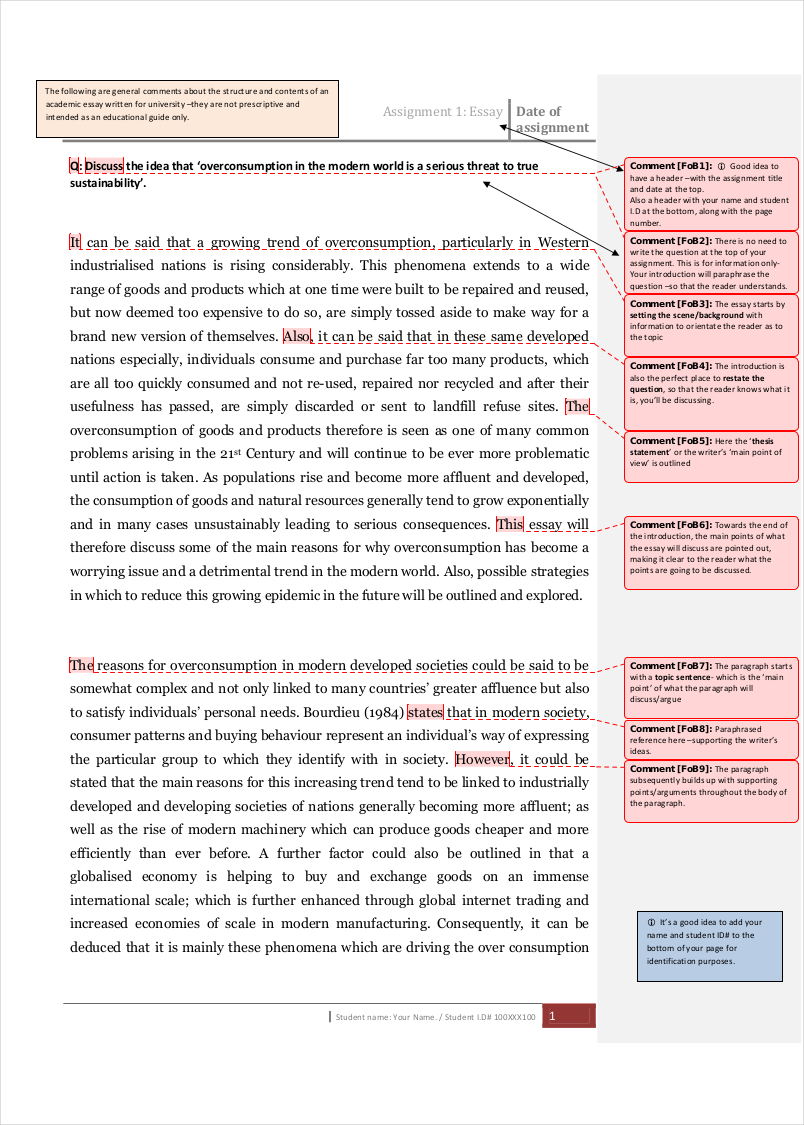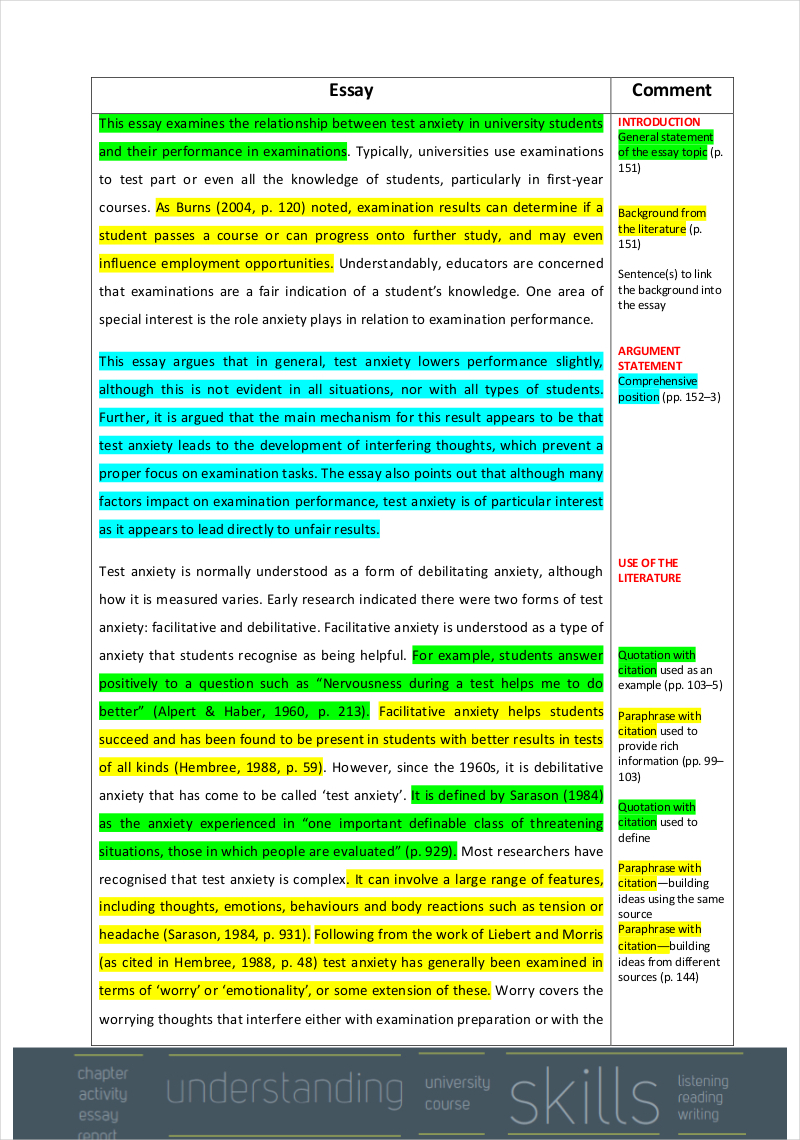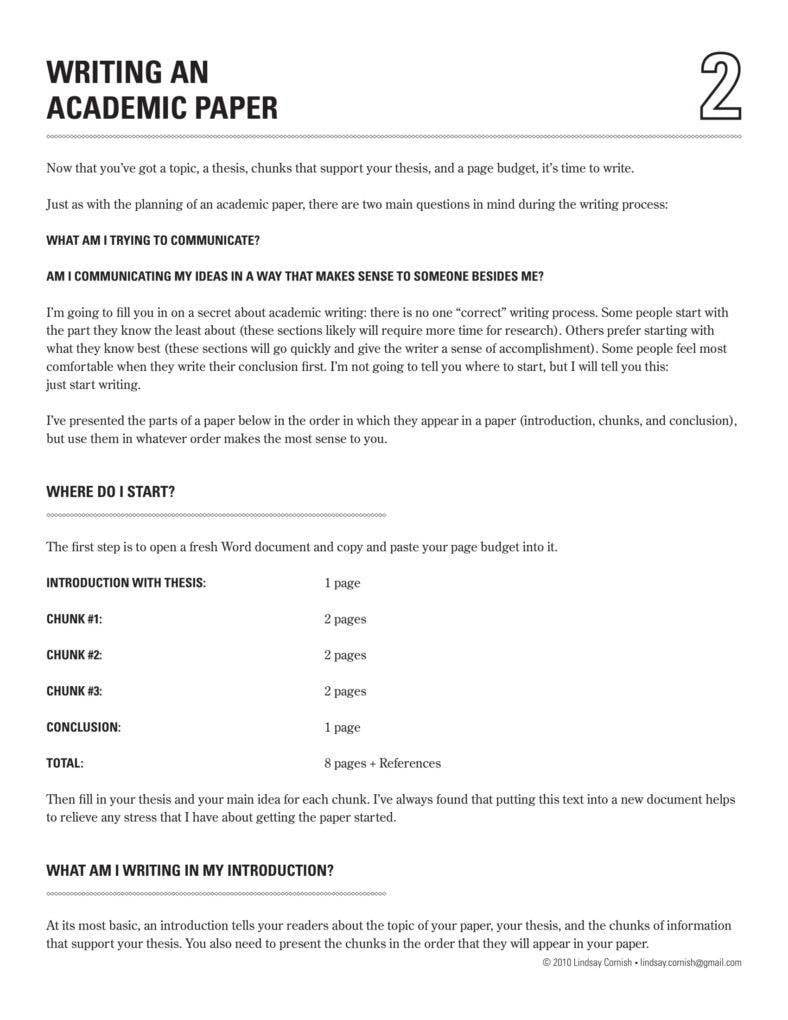
Academic Essay Example
Part 3: Concluding an Academic Essay. When writing the three-part conclusion in an academic paper, restate the thesis statement in a new way and develop the argument to include some of the information covered in the paper. In this example, the author expands upon the argument without losing sight of it original intention ��️ Step 7. Write Your Draft. At this stage, you already have an outline that gives you a direction. All you need to do is create the first draft of your paper by filling in the details of each section.. The header of your academic paper is very important. If you want to make a good impression on your audience, take note that the title is the first thing that they’ll see · Connection: When writing an academic essay, it is important to tie it directly or indirectly to the real world. Provide a reason why it is important to you or why it is relevant to society. This will fill your paper with new meaning and showcase your unique way of thinking.
/background(fff)/1920x2484.jpeg?auto=webp)
Step 1: Prewriting
An academic paper is not a social commentary, an opinion or a "blog". An academic paper begins with a thesis - the writer of the academic paper aims to persuade readers of an idea or solution to a problem based on EVIDENCE - not personal opinion. Academic writing should present the reader with an informed argument First, draw a circle in the middle of your paper and write your topic in the circle. Then, think of three or four ideas related to your topic. Each of these will become a node (see Figure ). Next, list as many ideas as you can related to each node. Part 3: Concluding an Academic Essay. When writing the three-part conclusion in an academic paper, restate the thesis statement in a new way and develop the argument to include some of the information covered in the paper. In this example, the author expands upon the argument without losing sight of it original intention

Table of contents
First, draw a circle in the middle of your paper and write your topic in the circle. Then, think of three or four ideas related to your topic. Each of these will become a node (see Figure ). Next, list as many ideas as you can related to each node. · Writing in Second/Third person. Academic papers are almost always written in a third person. This way the content sounds more objective, as it can be seen in these examples. Second person: You shouldn’t smoke because it is bad for you. Third person: Smoking should be avoided, as it can cause serious physical consequences. Citations and References · Connection: When writing an academic essay, it is important to tie it directly or indirectly to the real world. Provide a reason why it is important to you or why it is relevant to society. This will fill your paper with new meaning and showcase your unique way of thinking.

Types of academic writing
· Table of contents. Step 1: Prewriting. Step 2: Planning and outlining. Step 3: Writing a first draft. Step 4: Redrafting and revising. Step 5: Editing and proofreading. Frequently asked questions about the writing process First, draw a circle in the middle of your paper and write your topic in the circle. Then, think of three or four ideas related to your topic. Each of these will become a node (see Figure ). Next, list as many ideas as you can related to each node. Academic writing is a formal style of writing used in universities and scholarly publications. You’ll encounter it in journal articles and books on academic topics, and you’ll be expected to write your essays, research papers, and dissertation in academic style

�� What Is an Academic Paper?
· Table of contents. Step 1: Prewriting. Step 2: Planning and outlining. Step 3: Writing a first draft. Step 4: Redrafting and revising. Step 5: Editing and proofreading. Frequently asked questions about the writing process · So I think it ultimately depends on the stylistic constraints of the piece of writing at hand and on the norms adopted by the academic institution you’re writing for / on behalf of. But if history is anything to go by, I think very soon “datum” will be as rare as, for example, “agendum.” · Writing in Second/Third person. Academic papers are almost always written in a third person. This way the content sounds more objective, as it can be seen in these examples. Second person: You shouldn’t smoke because it is bad for you. Third person: Smoking should be avoided, as it can cause serious physical consequences. Citations and References
No comments:
Post a Comment